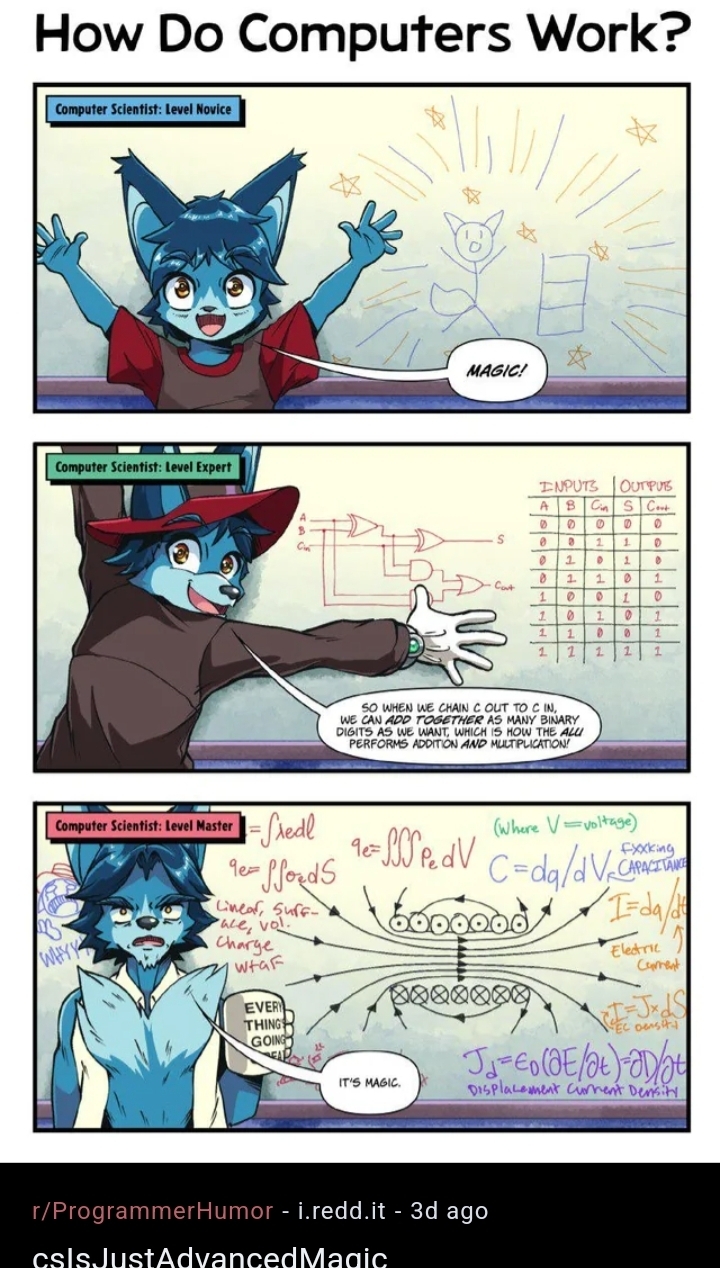this post was submitted on 27 Jul 2024
481 points (100.0% liked)
196
16509 readers
2306 users here now
Be sure to follow the rule before you head out.
Rule: You must post before you leave.
founded 1 year ago
MODERATORS
you are viewing a single comment's thread
view the rest of the comments
view the rest of the comments

EE major here. All the equations in the third panel are classical electrodynamics. To explain the semiconductors needed to make the switches to make the gates in the second picture, you really need quantum mechanics. You can get away with "fudged" classical mechanics for approximate calculations, but diodes and transistors are bona fide quantum mechanical devices.
But it's also magic lol.
Quantum Physics Postdoc here. Although technically correct this is also somewhat misleading. You need the band structure of solids, which is due to quantization and Pauli exclusion principle. The same quantum mechanics that explains why we did those strange electron energy levels for atoms in highschool. The majority of quantum mechanics, however, is not required: coherence, spin, entanglement, superposition. In the field we describe semiconductors as quantum 1.0, and devices that use entanglement and superposition (i.e. a quantum computer) as quantum 2.0, and smear everything else in-between. This
Can we trade?
Great write-up btw.
Oh my sweet summer child, a 100x yes, if only it were possible.
But more seriously, if you're doing EE, the world of quantum is your oyster. Specialize in RF/MW design and implementation, we use it for qubit control, and you'll be highly valuable.